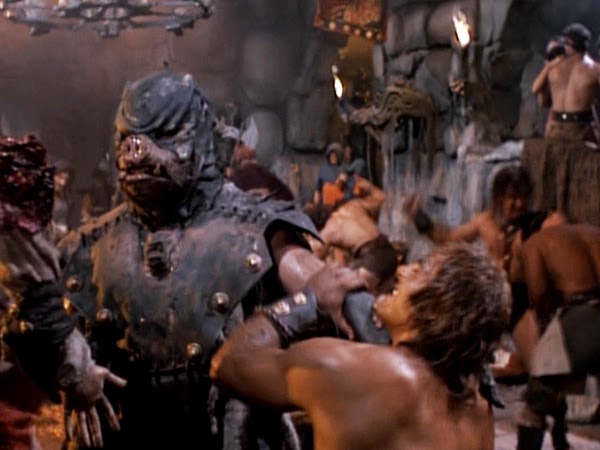Magic is one of the big ones. I’ve already discussed the changes to how preparing spells and spell slots work. Mearls, however, pointed out a few things I’d missed that are probably more important to how 5e is supposed to play at the table. So, in the spirit of “5e is always right,” I’ll be combing through my notes and sharing what I heard with y’all here.
One change that’s huge is how 5e handles concentration. Nearly every spell that lasts longer than 5e’s six-second round requires concentration. Concentration isn’t that limiting; you can still fight, run, drink a potion or whatever while you concentrate on maintaining a spell.
One thing you absolutely can not do while concentrating is cast another spell that also requires concentration. This is huge because most (though not all) buff spells require concentration. This means stacking buffs (like bless and enhance ability) can only be done if you’ve got multiple casters. Gone are the days when the party’s lone cleric would start every fight casting bless and prayer and whatever else buffs, stacking a pile of +1 and +2 bonuses on the rest of the party.
This is part of streamlining the game. One of the things advantage/disadvantage (and I’ll be talking more about that later) does is remove the chained arithmetic that plagues older versions of D&D: +1 for you STR bonus, +2 for being specced, +1 for bless, +2 for holding the high ground, -4 because your foe is invisible…
So, with a limited number of buffs, and most situational modifiers handled by advantage/disadvantage, it should be a lot easier to judge whether any given roll is a success. This shaves seconds off every player’s turn in combat and minutes off every combat.
There’s more to concentration however. If you’re killed or KOed, you lose concentration. Also, if you take damage while concentrating you have to make a Constitution save and the target number is 10 or half the damage you took, whichever is higher. Fail and the spell goes poof.
This isn’t just a big deal for buffs because a lot of spells that used to be fire-and-forget now require concentration. This includes the various “wall of…” spells and those like it, like web. That’s right, stop concentrating and your wall of sticky webs vanish and whatever was trapped in it is free. I don’t know about you, but that radically changes how I assumed those spells worked.
But wait, there’s more! Check out this bit from the spell flesh to stone (page 243 for those of you playing along at home):
A creature restrained by this spell must make another Constitution saving throw at the end of each of its turns. If it successfully saves against this spell three times, the spell ends. If it fails its save three times, it is turned to stone…
Yep, turning someone to stone is no longer a quick, save-or-die roll. I think all the old save-or-die spells have been changed this way. Mearls said he wanted to end the anticlimax of facing down the ancient dragon in its lair, only to have it fail a save in the first moment of combat and end the fight right there.
I’m not sure how much I agree with that goal, but it certainly makes those spells a lot more exciting and dramatic in combat.









